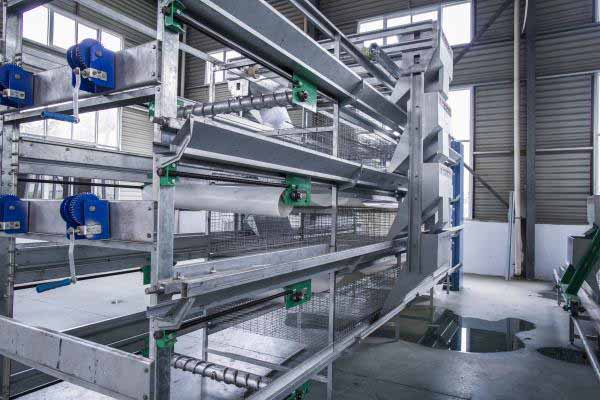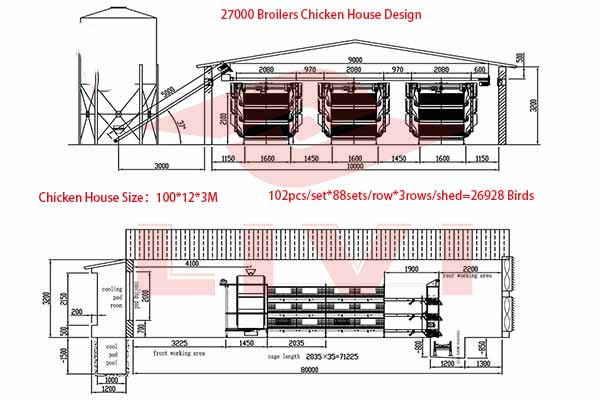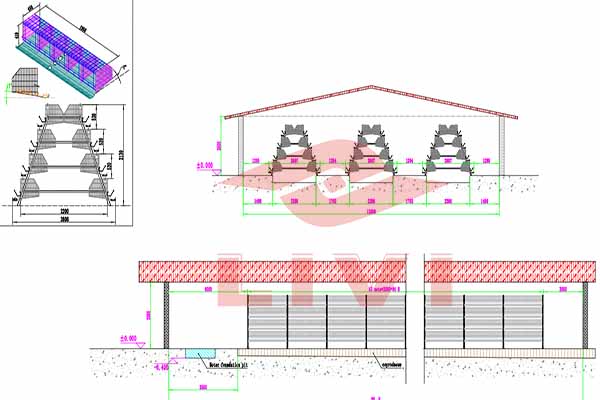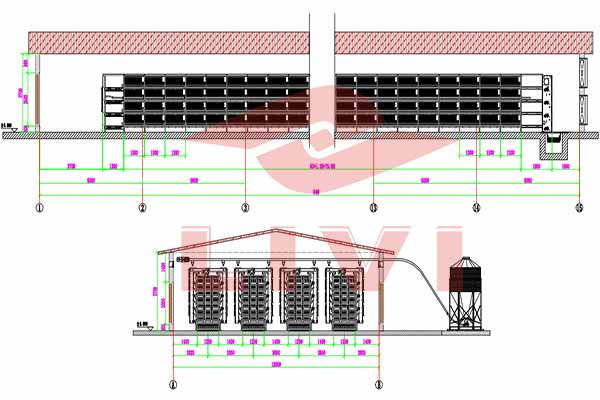Optimizing Chicken Battery Cage Systems for 500,000 Chickens in Kenya
Understanding the Scale of Chicken Farming in Kenya
The poultry industry in Kenya is burgeoning, with an increasing demand for eggs and meat. To meet this demand, large-scale chicken farming operations are becoming more common. One such operation involves the management of 500,000 chickens within a chicken battery cage system.
Why Choose a Battery Cage System?
Battery cage systems are designed to maximize efficiency and space in commercial poultry farming. They provide a controlled environment for the chickens, reducing the risk of disease and ensuring optimal growth conditions. Here are some key advantages:
– Increased Space Utilization: A well-designed system can accommodate up to 500,000 chickens in a relatively small area.
– Improved Egg Production: With proper ventilation and lighting, these systems can enhance egg production rates.
– Easier Maintenance: Cleaning and maintaining battery cages are simplified, ensuring a healthy environment for the chickens.
Design Considerations for a 500,000 Chicken Battery Cage System
When setting up a battery cage system for such a large number of chickens, several factors must be taken into account:
– Space Allocation: Each chicken should have enough space to move around comfortably. Typically, 0.3 square meters per bird is recommended.
– Ventilation: Ensure that there is adequate air exchange to prevent overheating and to maintain optimal humidity levels.
– Feeding and Drinking Systems: Efficient feeding and drinking systems are crucial for maintaining a high level of productivity.
– Lighting: Provide controlled lighting to mimic natural day-night cycles, promoting egg production.
Case Study: A Successful Implementation
One successful implementation of a battery cage system for 500,000 chickens in Kenya involved the following elements:
– Automated Feeders and Waterers: These systems minimized labor requirements and ensured that the chickens were fed and hydrated at all times.
– Integrated Environmental Controls: Temperature and humidity were maintained using advanced control systems.
– Regular Health Checks: Routine health monitoring helped in early detection and treatment of any potential diseases.
Conclusion
Implementing a chicken battery cage system for 500,000 chickens in Kenya requires careful planning and consideration of various factors. By focusing on efficient design, advanced technology, and meticulous management, it is possible to create a highly productive and sustainable poultry farming operation.
For those interested in exploring the possibilities of setting up a similar system, we invite you to contact us for a free poultry farming design consultation and equipment quotation. Let our experts at LIVI Machinery help you transform your vision into a reality.





